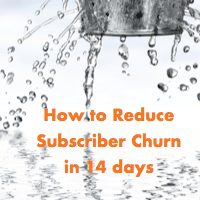
Five on Friday: SaaS KPIs, Emotional Triggers and Cross-Border Taxes
Lorem ipsum dolor sit amet, consectetur adipiscing elit. Ut elit tellus, luctus nec ullamcorper mattis, pulvinar dapibus leo.
Source: Bigstock
Happy St. Patrick's Day and thanks for checking out Five on Friday, our curated list of subscription-related "must reads." In this week's edition of Five on Friday, you'll find:
7 SaaS KPIs to Track in 2017 HootSuite's 7 Tips for Creating Effective Facebook Ads More Countries Are Adopting Cross-Border Taxes on Digital Services 7 Emotional Triggers to Hook Subscribers in Your Next Email Campaign Webinar: How to Reduce Subscriber Churn in 14 Days
We hope you find these article...
HELLO!
This premium article is exclusively reserved for Subscription Insider PRO members.
Want access to premium member-only content like this article? Plus, conference discounts and other benefits? We deliver the information you need, for improved decision-making, skills, and subscription business profitability. Check out these membership options!
Learn more about Subscription Insider PRO memberships!
Already a Subscription Insider PRO Member?
Please Log-In Here!









